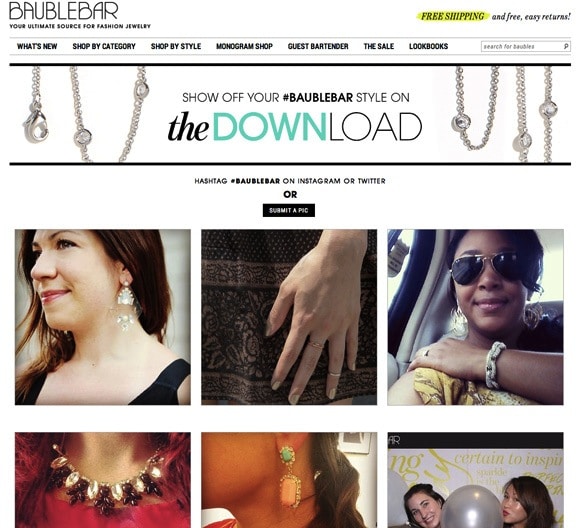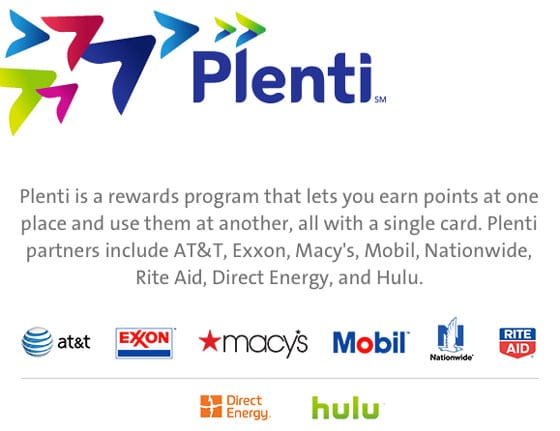Valuable Strategies to Generate Business Referrals and Increase Sales
If you don’t have a referral marketing strategy in place, you’re giving up a substantial amount of revenue.
Referrals from happy customers represent your best opportunity to grow revenue and profits in your business.
In fact, customers referred to a product are more valuable. A Wharton School of Business study found that referred customers have a 16% higher lifetime value and are more loyal.
Yet, many small businesses and startups leave referrals to chance.
This is a mistake.
The same Wharton School study found that 83% of customers said they were willing to refer products or services they liked, but only 29% actually did.
Leaving referrals to chance gives your competitors an unfair advantage.
Here are the proven strategies that can help you generate business referrals and win back the advantage from your competitors:
- Ask for referrals at the right time.
- Make it easy for customers to refer your business.
- Promote user-generated content.
- Encourage customer reviews.
- Create a rewards program.
Let’s take a deeper look at each of these strategies and how you can use them to create a referral marketing strategy for your business.
Ask for referrals at the right time
The saying that “it never hurts to ask” is half true for customer referrals.
You shouldn’t feel shy to ask your customers for their help.
What’s more important is when you ask.
Ask too early, and you might create a wrong impression.
Ask too late, and customers may ignore you.
The right time to ask varies from business to business, but a good rule of thumb is to ask when your customer has just had a positive experience with your company.
Business author David Finkel puts it even more succinctly:
The best time to ask for a referral is often right at the time your customer buys. Have a scripted out referral question that you AUTOMATICALLY ask every customer who buys.
Finkel suggests a “gift a friend” referral idea: after completing a sale, ask the customer if they know of one or two friends who would like to receive a gift.
For example, if your company sells bath and beauty products, offer customers the opportunity to gift a friend a package of samples.

We just emailed the info to you.
Make referrals easy
Whenever you ask, one thing’s certain: make it easy for customers to give referrals.
Any referral mechanism you give customers should be as frictionless and straightforward as possible so you don’t lose the customer due to an overly complex process.
For example, remember the gift-a-friend idea we mentioned above? Give customers a simple form to complete that asks them for the bare minimum necessary to send their friend the gift.
Received positive feedback from a customer? Politely ask them for their referral and then make it easy for them to give it.
And make sure to thank them for their help.
Here’s how we do this at crowdspring.
Over the past decade, crowdspring has helped over 50,000 businesses, agencies, and non-profits with custom logo design, web design, print design, product design, packaging, design, and even naming companies and products.
At the end of every project (projects typically last 7 days but can be completed in as few as one day), we show clients a short, optional survey. We do this right on our site and split the survey into two parts.
In part one, we ask clients for feedback about their chosen designer (or namer). We ask the client to rate each creative and leave an optional comment.
In part two, we ask for similar feedback about crowdspring. We ask the client to rate how crowdspring performed and invite them to leave an optional comment.
This two-part survey can be completed in under one minute and provides both the 210,000+ creatives working on crowdspring and us valuable insights about the customer’s experience on our platform.
Each customer also receives an email directly from our CEO at the end of every project, thanking them for their business and asking for additional feedback or suggestions on improving our service.
This is an automated email, but it comes directly from our CEO, and when a customer responds (as many do), they respond directly to our CEO.
We get precious insights and suggestions from such responses.
Promote user-generated content
Giving your customer a way to create content that links to your products or services is another great way to generate referrals.
This is especially true when marketing to younger, more mobile generations on social media networks.
As we recently wrote,
Social media and other online forums provide a fun and convenient outlet for making friendly recommendations, product comparisons, and sharing in the overall product experience. By fostering and participating in these conversations, savvy businesses stay deeply in touch with their consumers’ interests, wants, and dislikes.
A study by Nielsen found that the most trusted kind of advertising was “earned media,” which refers to word-of-mouth and recommendations from friends and family.
Ask your customers for photos of them using your product.
Have them post their photos on social media sites like Instagram or Twitter.
Now you’ve got a referral and what amounts to an ad for your product delivered to all of that person’s followers via a trusted source.
Take this strategy seriously. 74% of people surveyed relied on social media to inform their decisions to buy a product.
Study after study shows that word-of-mouth marketing is highly effective, often increasing sales at twice the rate than regular paid advertising.
Encourage customer reviews
A recent study found that 88% of consumers trusted online reviews just as much as personal recommendations.
Smart companies like Amazon know this well and have built global businesses grounded in reviews.
Amazon’s reviews system is a huge driver of traffic and sales for the retail giant.
55% of shoppers start their buying research on Amazon reviews, according to surveys done by marketing intelligence firm Bloomreach.
Merely having a single review increases the rate that buyers will click “add to cart” by 65% over products with zero reviews, says Power Reviews CEO Matt Moog.
Amazon and other smart businesses know that the more positive reviews you have, the more consumers will be convinced that they’re making the right purchasing decision.
So, what’s the best way to get more reviews?
First of all, try the direct route and ask your customers to write a review.
Customers can be open to writing reviews, but they often forget.
After all, as studies have shown, people tend only to speak up when something goes wrong.
So come right out and ask.
We do this all the time, and you can find crowdspring reviews right on our site.
The worst-case scenario is that your customers had a poor experience, and you can get valuable feedback on where things might have gone wrong.
What’s important is that you make the process of providing feedback easy.
We wrote about some easy ways to do so that is convenient and inexpensive:
- A phone survey at the end of a service call,
- An email survey sent from your CRM tool (Mailchimp has a great tool for this),
- An active presence on social media outlets like Facebook and Twitter, where quick responses are critical,
- A form on the “Contact Us” page of your website.
Whether these methods work best for your business, remember that feedback is the best way to know how your customers feel about your brand.
Posting a review shouldn’t require customers to jump through hoops or fill in endless forms. You want to do all of the hard work for them, giving them more incentive to complete the task.
All you need is a name, a rating (use stars or numbers – something straightforward), and the review itself. Getting their email address for verification or validation purposes only is also helpful.
If you want to give them even more incentive, offer them something in return.
This could be as simple as:
- A discount or coupon for their next purchase
- Contest or giveaway entries (to win popular products, gift cards, or a one-of-a-kind item, for example)
- Gift certificates (for more detailed or in-depth reviews)
Or, you could give them points as part of a rewards program, which we’ll get to later.
If you ask for reviews, ensure you have someone tasked with moderating them and responding to especially negative ones. If customers uncover a real issue, acknowledge it, apologize, and improve it.
This kind of openness can go a long way in establishing trust and authenticity.
Most importantly, thank them for taking the time to write a review. Your customers take time to do you a favor, so be gracious and receptive to criticism.
Create a rewards program
Loyalty and rewards programs can require a fair bit of work to run and maintain, but they can also be huge sources of repeat and referral business.
In fact, smart businesses know that getting a new customer costs more than retaining an existing one.
Research from Bain & Company shows that increasing customer retention rates by just 5% can increase profits by anywhere from 25% to 95%.
Reward and loyalty programs are well-established way to help achieve retention.
There are many different kinds of loyalty programs, but they tend to boil down to a few different types:
- Points-based, such as Sephora’s Beauty Insider card
- Tier-based. Travel programs like Virgin Atlantic’s Flying Club or Porter Airline’s VIP Passport are good examples
- Charging a fee for VIP benefits. Amazon Prime is a, well, prime example.
- Non-monetary programs that do good, such as TOMS One for One and Warby Parker’s Buy One, Give One.
- Partnerships (aka coalition programs) that pair purchase and points across multiple companies. American Express’s Plenti lets consumers buy from a company like Macy’s, Hulu, Rite Aid, AT&T, and ExxonMobil and then use the points they earned at another one of the partner companies.
- Games! Create a game that gives customers a reason to buy more products. McDonald’s Monopoly is an annual game that the company runs every year where customers get new game pieces every time they purchased a food item.
Starting your rewards or loyalty program can be a lot of work, but luckily there are many excellent guides for getting things off the ground.
- Hubspot has a Beginner’s Guide to Building a Customer Loyalty Program.
- ReferralRock has a terrific guide – Referral Marketing 101: How to Start a Referral Program That Works.
- The US government’s Small Business Association has 7 Tips for a Starting a Successful Customer Loyalty Program.
- Entrepreneur Magazine provides A Checklist For Getting Your Customer-Loyalty Program Off the Ground.
- CardFellow explains How To Start A Successful Loyalty Program
Referrals may be the best source of revenue for most businesses.
But don’t make the mistake of leaving referrals to chance.
Create a habit of asking for referrals and consider the abovementioned strategies.
These strategies can take your business to the next level.
Design Done Better
The easiest way to get affordable, high-quality custom logos, print design, web design and naming for your business.
Learn How to Grow Your Business With Beautiful Design


